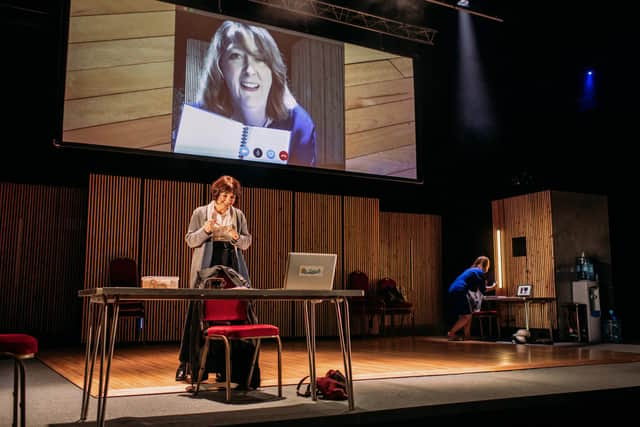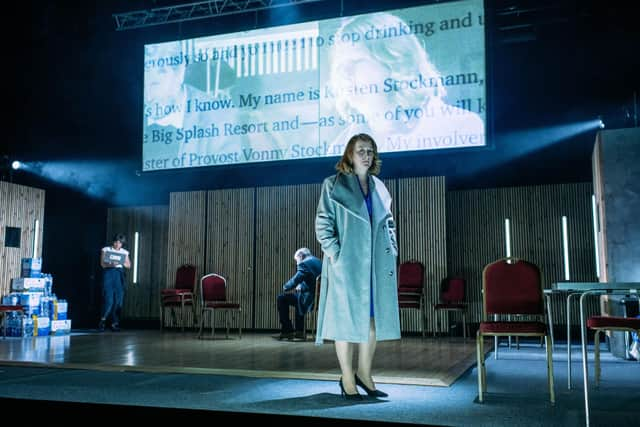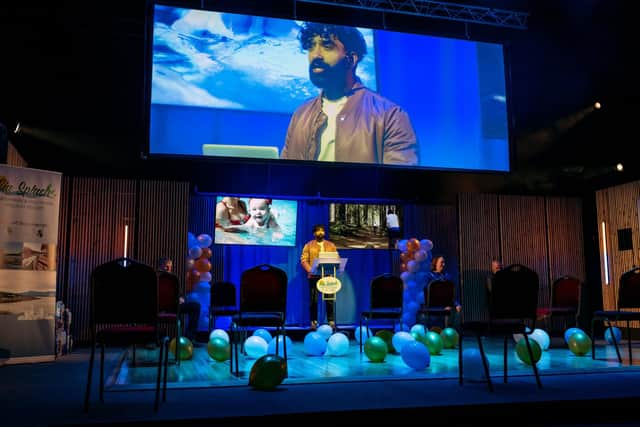National Theatre of Scotland comeback raises key questions about the future of live shows – Brian Ferguson
I can vividly recall working away in the run-up to the festive season being inundated with news of digital films which had been made by theatre companies behind closed doors.
They were absolutely crucial in bringing actors and other theatre workers back in front of audiences and were a crucial reminder of what was being missed at a time of year when venues up and down the country were normally packed out for weeks.
Advertisement
Hide AdAdvertisement
Hide AdBut by the end of last year, the prospect of sitting in front of a laptop after a day sitting in front of a laptop had begun to lose its appeal.
I began to long for the sights, sounds and smells of favourite venues and those magical moments, especially when darkness falls and a play begins.
After a few months of largely outdoor events and performances since Covid restrictions began to ease in Scotland, I was full of anticipation striding up to the bright lights of Dundee Rep for The Enemy, which marked the return of the National Theatre of Scotland to live performance.
For an adaptation of a play nearly 140 years old – Henrik Ibsen’s Enemy of the People – its arrival on stage seems extraordinarily, and even eerily, timely.
The adaptation, which mirrors the plot of the original play, focuses on the impact of an escalating public health crisis on two sisters whose lives are inextricably linked to a new luxury health resort which has contaminated their town’s water supply.


With one of the two sisters, the town’s provost, battling to keep a lid on the scandal, regardless of the fall-out, it was impossible to watch The Enemy unfold on stage without thinking of the UK’s handling of Covid – not least because the show opened in Dundee in the immediate aftermath of a damning report from MPs into the UK government’s efforts to manage the pandemic and the delays in introducing lockdown measures.
It was also impossible to watch The Enemy without noticing how essential film, video and the social media world were to the staging of the production.
A mix of live and pre-recorded footage played out above the heads of the cast as they performed.
Advertisement
Hide AdAdvertisement
Hide AdWhile it was occasionally distracting, it also undoubtedly amplified the power of the central performances by Hannah Donaldson and Gabriel Quigley. It is also hard to imagine an alternative way of depicting the escalating online frenzy which piles on top of Donaldson’s character Kirsten, as her town appears to turn against her because of her pursuit of the truth.


But the unconventional staging of The Enemy and its reliance on technology did make me wonder whether it would be the shape of things to come for the theatre world.
It’s not just about the use of mobile phones and social media to help tell a story.
It’s also about whether audiences now used to experiencing theatrical performance via multiple camera angles and screens will expect more of the same when they sit down in a darkened room – or will be seeking to leave new technology behind them and escape from the real world when they go to see a show.
A message from the Editor:


Thank you for reading this article. We're more reliant on your support than ever as the shift in consumer habits brought about by coronavirus impacts our advertisers.
If you haven't already, please consider supporting our trusted, fact-checked journalism by taking out a digital subscription.
Comments
Want to join the conversation? Please or to comment on this article.